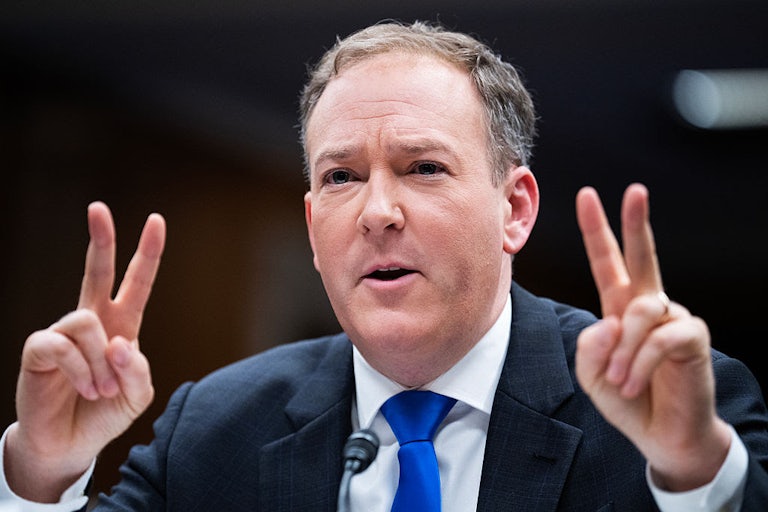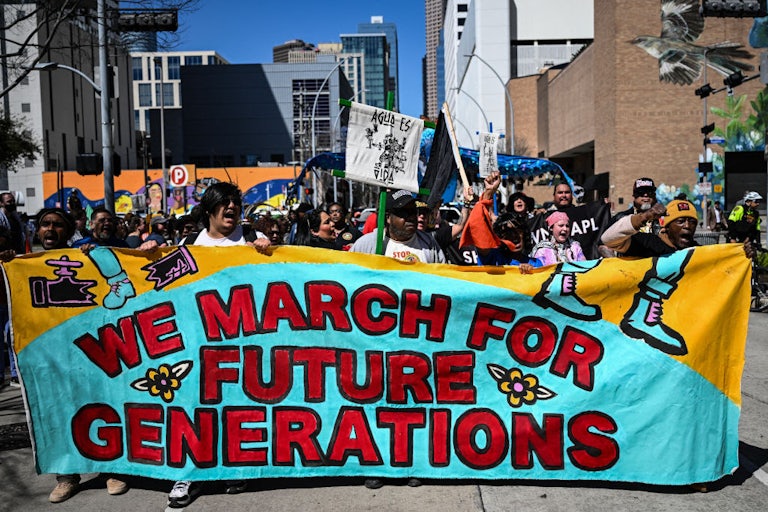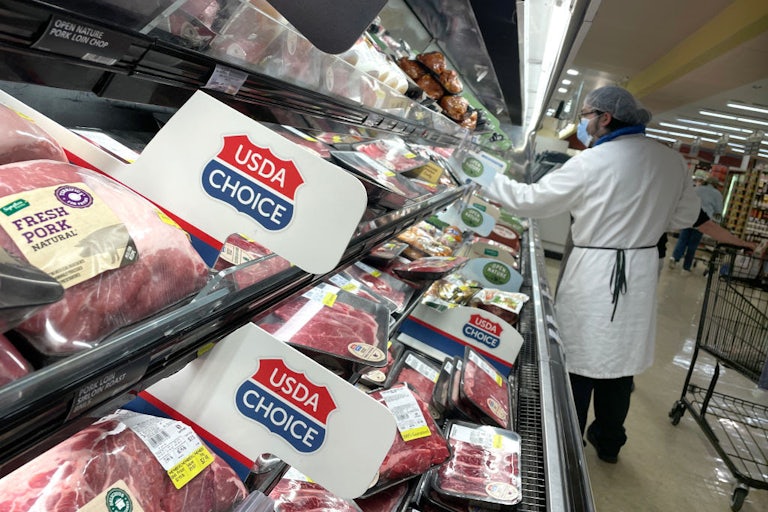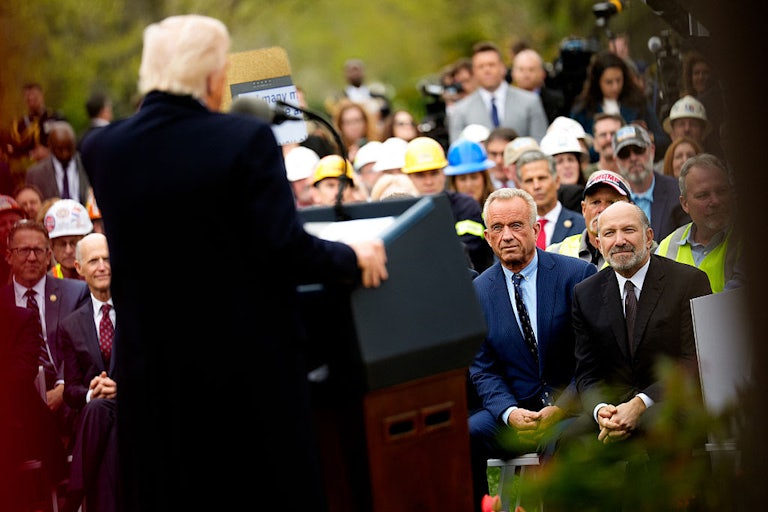Authoritarianism Is Climate Policy
The Trump administration’s imperialist, repressive rampage is a classic response to escalating crisis.

The Trump administration will stop counting lives saved in its cost-benefit analyses of air pollution regulations, and instead will only consider the cost to businesses. “It’s a seismic shift that runs counter to the [Environmental Protection Agency]’s mission statement, which says the agency’s core responsibility is to protect human health and the environment,” The New York Times reported this week. “The change could make it easier to repeal limits on [fine particulate matter and ozone] from coal-burning power plants, oil refineries, steel mills and other industrial facilities across the country.”
Declaring the demise of climate policy is practically a weekly media event these days. “The climate agenda’s fall from grace over the past year has been stunning—in scale and scope,” wrote Axios’s Amy Harder in this week’s installment, noting that the president recently withdrew from the United Nations Framework Convention on Climate Change. “Whether this collapse in climate-change ambition proves permanent or temporary will shape the planet—which is still warming in unprecedented ways—and trillions of dollars in global energy investment.”
Of course, the “collapse” has not been stunning in any way: It is precisely what the Trump team promised, and the international repercussions are precisely what experts predicted. But more importantly, can one even call it a collapse? The vague phrase “the climate agenda” is doubtless intended to conjure Greta Thunberg and the Green New Deal, and yes, that agenda has been summarily abandoned by a lot of politicians of late. But Trump does have a climate agenda. It’s just a negative and bloody one, as it’s intertwined with his authoritarianism.
Consider the U.S. military invasion of Venezuela. However murderous and abusive Maduro’s regime, killing some 75 people to kidnap him and having no clear plan to stabilize the country—except to exploit oil reserves that would blow 13 percent of the global carbon budget by 2050, making life costlier and more precarious for everyone but oligarchs—is clearly not a humanitarian intervention. It’s an intervention, albeit a very clumsy one, on behalf of the business interests Trump’s chummy with.
It’s the same principle on display with Greenland. Trump is proposing a forced takeover of a sovereign territory in order to dictate the terms of extraction of rare earths and fossil fuels, while seizing a slice of the rapidly melting Arctic pie. The administration claims this is a matter of national security, but it’s hard to see how overturning the NATO table and smashing it to smithereens will make ordinary people safer—particularly if this unleashes Russia and China to pursue similarly imperialist plans. What it will do is enrich the companies that get lucrative contracts.
Authoritarianism is a response to climate change, as numerous people have warned for years. That includes imperialism and the race to secure resources, the criminalization of protest, and anti-immigration policy. It’s not an attempt to prevent global warming, but rather an attempt to protect a chosen few—to build a wall, whether figurative or literal, around a certain class of people.
The new EPA policy, which explicitly rejects lives saved as a lesser concern than business profits, exposes this line of thinking. You’ve heard it before, though. Fighting climate change would be too costly, so the narrative goes. Costly to whom? Not fighting climate change is already very costly to everyone else, whether in terms of affordability or lives lost.
Insofar as there is hope in all this, it lies in the mounting body of evidence that this approach is in fact extremely unpopular. Voters overwhelmingly oppose the Trump administration’s moves to shut down climate research. They oppose gutting the regulations limiting pollution. And they increasingly see the connection between the climate crisis and the cost-of-living crisis. The authoritarian sales pitch has always been about convincing voters that they are to be a part of the protected class. More and more people are now saying they’re not convinced.
Stat of the week
13 percent
Current U.S. plans to exploit Venezuelan oil reserves would burn through 13 percent of the global carbon budget needed to keep warming under 1.5 degrees, the Guardian
reports.
What I’m Reading
RFK Jr. Forgot What Makes Us Healthy
The recently released inverted food pyramid has a lot of problems. Emily Atkin cuts to the heart of the matter.
This is my biggest problem with the new food pyramid. It treats food as a purely biological input rather than a public ecological choice—as if health exists on a separate plane from the land, water, and climate that make nourishment possible in the first place. Thinking this way may make sense for individual bodies in the short term. But in the long term, and in the aggregate, it’s deeply irresponsible.
You cannot build a healthy society on top of an unhealthy biosphere. The climate, water, soil, and land that produce our food are as important to our health as the food itself. Without them, all our talk of “healthy eating” becomes a kind of denial—pretending we can thrive while the systems that keep us alive break down.
Read Emily Atkin’s full essay at Heated.
This article first appeared in Life in a Warming World, a weekly TNR newsletter authored by deputy editor Heather Souvaine Horn. Sign up here.








